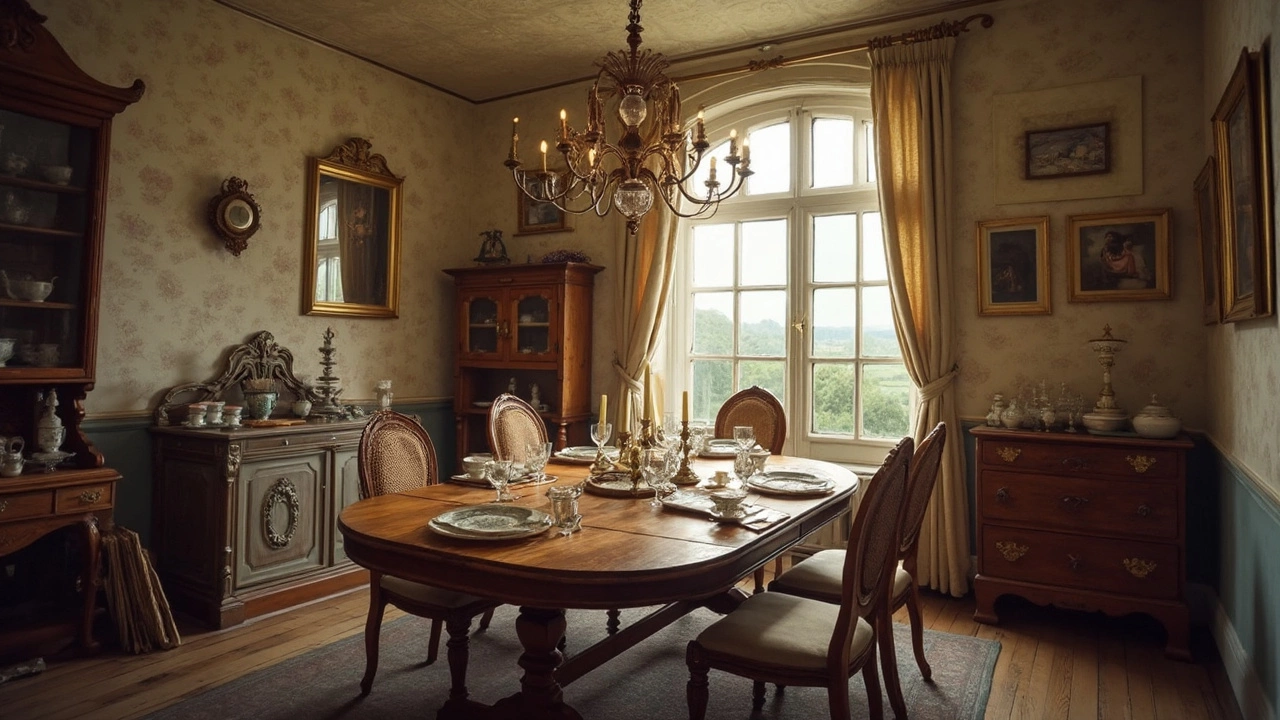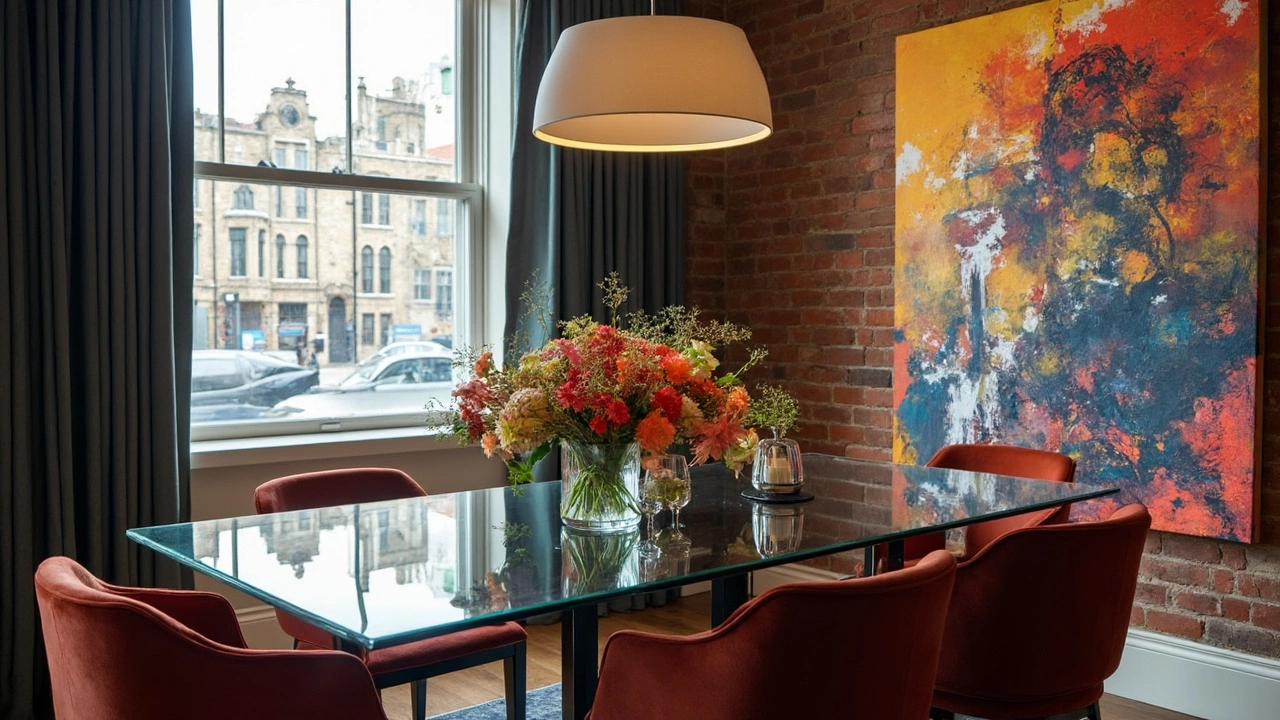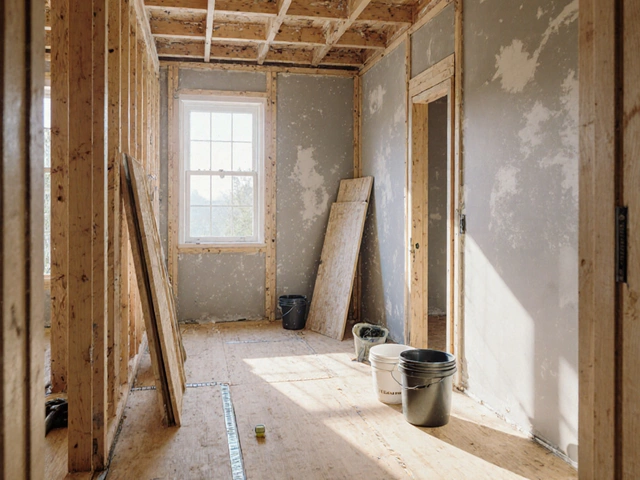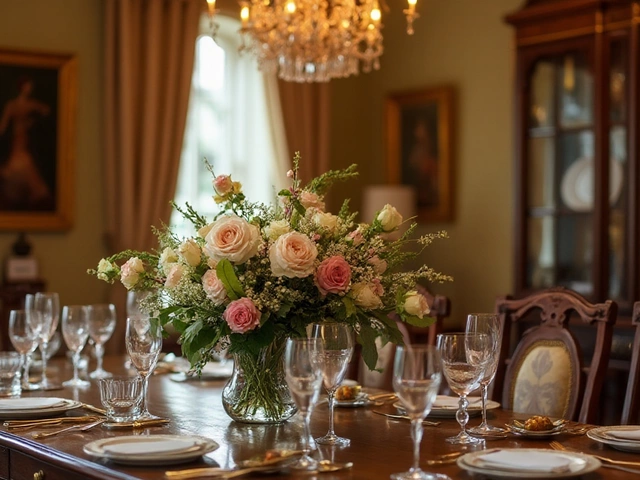
So, what really makes a dining room, well, a dining room? It's more than just tossing a table and some chairs in a room. It's about creating a space where people genuinely want to gather and share a meal. The heart of it all, of course, is the dining table. You might think a table is just a table, but it's actually the cornerstone of this space. Ever tried fitting a ten-person dinner party around a tiny table? Yeah, it doesn't work.
Think about how many people you regularly invite, or plan to invite, and go from there. A well-sized dining table that suits your needs is essential. But size isn't the whole story; material matters too. Wood is warm and classic, metal gives off a modern vibe, and glass creates an illusion of space. It's kind of like choosing your favorite pair of shoes — it has to fit both style and function.
And then, there's the seating to consider. Those dining chairs need to be comfy enough for long conversations and sturdy enough to handle the odd spill. Upholstered chairs scream cozy, while sleeker designs can make a statement. Blending in, standing out, or a bit of both — it's up to you. So, put thought into these choices, and the rest of your dining room will start shaping itself around these key pieces.
Defining the Space
Alright, so how do you carve out a dining room that genuinely feels like one? It starts with setting clear boundaries. An open floor plan can feel like one giant, jumbled room if you don't put in a little effort to define each area. Consider using a rug that fits under your dining room table and chairs; it acts like a visual border without needing walls.
Lighting plays a massive role too. Ever notice how a dangling chandelier can give a dining area its very own spotlight moment? It's like saying, 'Hey, this is our dining space.' The light should be bright enough for eating but maybe add a dimmer to set the mood when it's time for those leisurely post-dinner chats.
Now, let’s talk walls, or the lack thereof. If you're in a small apartment or space-share situation, think about extending the dining room with a feature wall. A bold paint color or interesting wallpaper does more than look pretty; it guides the eye and anchors the room. It's decorating with a purpose, not just throwing up stuff to fill the empty spots.
Last but not least, incorporate some personal flair. Whether it’s a family photo wall, an antique buffet, or that quirky chandelier you scored from a flea market, these elements give your dining area a personality. It's what sets your dining room apart from everyone else's, making it distinctly yours.
Choosing the Right Furniture
Picking out dining room furniture can feel like piecing together a puzzle, but it's totally doable once you know what to look for. Once the size of the dining table is nailed down, consider its shape. Round tables encourage conversation but remember, they take up more space than you might think. Rectangular tables are classic and can fit snugly in most spaces.
Wood is a timeless choice for the table, providing warmth and durability. According to interior designer Jane Thompson,
"A wooden table not only grounds your dining room, but it also ages beautifully over time."Though solid wood is popular, engineered wood or veneer tables offer a budget-friendly alternative without compromising style.
Now, when you're shopping for chairs, think beyond just matching them to the table. Mixing materials can inject personality and charm. For example, metal chairs against a wood table create a cool contrast that reads modern but not icy. It's all about finding that sweet spot between aesthetics and comfort—after all, nobody wants to fidget through a four-course meal on an uncomfortable chair.
Let's not forget the supporting cast. Storage pieces like sideboards or buffets can add both function and style to your dining area. They're perfect for stashing away those special occasion dishes or even board games for post-dinner fun. Pick something in line with your overall style so it doesn't feel out of place.
In essence, the right furniture choices make a dining room versatile enough for small family dinners or big festive gatherings. Whether you're going for a classic, modern, or eclectic look, the goal is to make everyone feel comfortable and happy. That's the recipe for a successful dining room.

Creating Atmosphere
Alright, let's talk about how to set the mood in your dining room. You want this space to be inviting, warm, and maybe even a bit stylish, right? The atmosphere is what turns a simple dinner into an unforgettable experience.
First up, lighting. Consider layering different light sources. Use a central chandelier or pendant light to anchor the room—a real showstopper can do wonders here. But don't stop at the ceiling; table lamps or floor lamps can add a cozy glow. Dimmers are a game-changer because they let you adjust the lighting to match the mood, whether you're having a low-key dinner or a lively family gathering.
Next, the walls. Neutral colors are your friend if you want a timeless look, but don't be afraid of a splash of color or some textured wallpaper to add character. Consider adding a piece of art or a mirror to make the space feel lively and more spacious.
Another vibe booster? The flooring. Hardwood floors are classic for a reason—they're durable and easy to clean. Area rugs can introduce a pop of color or texture while also helping define the space.
Let’s not forget the power of the extras. Plants or flowers on the table can breathe life into the room, while an elegant centerpiece can be a great conversation starter. Little touches like well-chosen dinnerware and cloth napkins can elevate the dining experience without a ton of effort.
So there you have it—a bit of this and a touch of that, and your dining area becomes a hub of style and warmth.
Functional and Aesthetic Tips
Getting the dining room vibe right hinges on balancing function and flair. It doesn't have to be tricky if you focus on a few key areas. Let's dive into how you can boost both the practicality and look of your dining space without breaking a sweat.
For starters, think about lighting. It seems simple, but lighting can totally change the feel of your home design. A dimmer switch is like the secret weapon of the dining world. It lets you adjust the mood, whether you're hosting a romantic dinner or a kid's birthday bash. Hanging a statement light fixture over the table is a neat way to draw the eye and set the room's tone.
Now, let's talk storage. Ever walked into a dining room and thought it felt cluttered? A sideboard or buffet can be a lifesaver. They provide extra space for dishes and utensils, plus you can top them with decorative pieces to add character. Guess what? They're not just practical but also double as display areas for your favorite pieces.
Don't knock the power of a rug, either. In addition to defining the dining area, rugs also add warmth and texture. When picking a rug, make sure it's big enough so chairs still sit on it even when pulled out. A good rule of thumb is to aim for a rug that extends about 24 inches beyond the table on all sides. It doesn't just look right; it keeps your space functional too.
- Use multipurpose furniture like a bench that can also serve as extra seating.
- Choose easy-to-clean materials for chairs and tables if you have kids (or messy eaters).
- Play with decorative elements like wall art or centerpieces that resonate with your personal style.
All these tips aren't just for buzzing up the room's vibe. They're little tweaks that enhance your dining area's usability. It's not just about how things look but also about how your furniture works for you. When you've got a well-thought-out setup, you can't go wrong!




